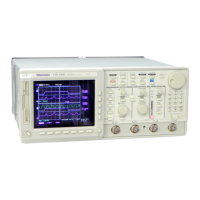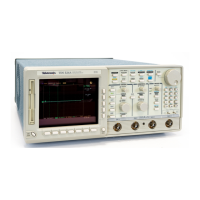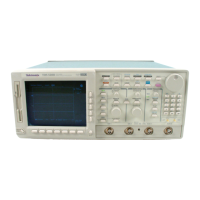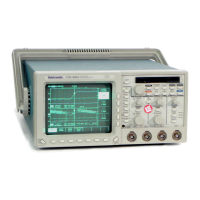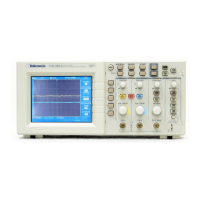Appendix B: Algorithms
B–6
TDS 500B, TDS 600B, & TDS 700A User Manual
Amplitude (voltage) measurement. The mean over one waveform cycle. For
non-cyclical data, you might prefer to use the Mean measurement.
If = then return the (interpolated) value at .
=
ŕ
()dt
( * )
For details of the integration algorithm, see page B–12.
The true Root Mean Square voltage over one cycle.
If = then = .
Otherwise,
=
ŕ
(())
2
dt
( * )
Ǹ
For details of the integration algorithm, see page B–12.
Timing measurement. The amount of time between the and
crossings of two different traces, or two different places on the same trace.
Delay measurements are actually a group of measurements. To get a specific
delay measurement, you must specify the target and reference crossing polarities
and the reference search direction.
= the time from one crossing on the source waveform to the
crossing on the second waveform.
Delay is not available in the Snapshot display.
Timing measurement. The time taken for the falling edge of a pulse to drop from
a value (default = 90%) to a value (default = 10%).
Figure B–2 shows a falling edge with the two crossings necessary to calculate a
Fall measurement.
1. Searching from to , find the first sample in the measurement zone
greater than .
Cycle Mean
Cycle RMS
Delay
Fall Time

